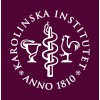
Minimal Invasive Imaging of Coronary Artery Disease in Patients With Asymptomatic Myocardial Injury...
Myocardium; InjuryCoronary Artery DiseaseThis is a cross-sectional pilot study to assess coronary artery disease with minimal invasive techniques in patients with asymptomatic troponin elevation after noncardiac surgery. The primary objective is to quantify coronary artery disease, as determined by coronary CT and MR, as a cause of postoperative myocardial injury. The secondary objective is to correlate coronary calciumscore to postoperative levels of troponin.

Pharmacogenetic and Pharmacokinetic Study of Clopidogrel
Coronary Artery DiseaseThis registration study aims to investigate the associations of the pharmacogenetic and pharmacokinetic factors with clopidogrel low response and clinical outcome in patients with coronary artery disease, and provide new pharmacogenetic and pharmacokinetic targets for the individualized anti-platelet treatment.

Arginase Inhibition in Ischemia-reperfusion Injury
Coronary Artery DiseaseType 2 Diabetes MellitusThe present project is designed to test the hypothesis that arginase contributes to endothelial dysfunction induced by ischemia-reperfusion in patients with coronary artery disease.

Coronary Artery Calcification Score and Risk Factors for Coronary Artery Disease in Persons With...
Spinal Cord InjuryAlthough conventional risk factors for coronary heart disease (CHD) have been identified and routinely used to determine risk for CHD in the general population, a systematic approach to determine population-specific risk for CHD has not been performed prospectively in those with SCI. CHD is a leading cause of death in spinal cord injury, occurring at younger ages than in the able-bodied population. Conventional risk factors for CHD are high serum concentrations of low-density lipoprotein (LDL), low serum concentrations of high-density lipoprotein (HDL), diabetes mellitus (DM), positive smoking history, and positive family history of premature CHD. Coronary Artery calcification (CAC) is a commonly occurring phenomenon that does not necessarily indicate significant obstructive disease. Studies have shown that a strong association exists between coronary calcification and coronary heart disease. The purpose of this study is to compare the CAC scores in persons with SCI with a historical control group of able-bodied persons from a national data base who will be matched for conventional risk factors for coronary artery disease (CAD) and to determine the relationship between CAC scores and conventional and emerging risk factors for CAD. Additionally, postprandial lipemic (elevated levels of lipids following ingestion of food) responses among individuals with SCI and control subjects will be compared, as well as the response of inflammatory markers following a high fat meal. Participants will only be tested once for these parameters.

Cardiac Rehabilitation Peer Mentorship
Percutaneous Coronary InterventionCoronary Artery Bypass Graft Surgery4 moreThe current study is a randomized controlled trial, being conducted at two hospitals in Toronto, Ontario, Canada, involving the randomization of cardiac inpatients into an intervention group, in which they will receive mentorship from a volunteer cardiac rehabilitation peer mentor, and a control group, in which they will receive usual care. Patients in both groups will be tracked to determine if they are referred to cardiac rehabilitation and if they enroll in cardiac rehabilitation. We hypothesize that compared to cardiac inpatients who receive usual care, those cardiac inpatients who receive cardiac rehabilitation peer mentorship will be more likely to be referred to and enroll in cardiac rehabilitation.

Study to Detect Biomarker Gradients in Coronary Arteries Using the Liquid Biopsy System
Coronary Heart DiseaseThe Liquid Biopsy System (LBS) is a new catheter (thin tube) designed for sampling blood directly from coronary arteries. These arteries supply blood to muscles of the heart and can become blocked by 'plaques' leading to chest pain (angina) and heart attacks. Recent research has shown that development of ' plaques' inside coronary arteries is controlled by chemicals (biomarkers) released into the blood from damaged areas of the artery wall. The LBS is designed to collect blood samples at the exact site of plaque formation. By testing these blood samples for biomarkers of plaque formation, it is hoped that new diagnostic tests and treatments for heart disease may be developed. The proposed investigation is use the LBS in humans to detect these biomarkers. The safety of the LBS has already been demonstrated in both human and animal studies. The study will enroll 70 patients with coronary artery disease who are undergoing routine percutaneous coronary intervention (PCI). PCI is a procedure used to open up a blocked coronary artery. It uses a catheter on the end of which is a special balloon that is inflated inside the blocked artery to open up the vessel and restore blood flow. A small metal spring (stent) is usually inserted to keep the blood vessel open. This study will test if the LBS device, when used just prior to a PCI procedure, can detect biomarkers released by diseased coronary arteries. The study will also determine if the presence of these biomarkers is linked to the long term health of the patient. The study will take place at Papworth Hospital, over a period of approximately 8 months (including telephone based patient followup calls 30 days, 6 months, 1, 2 and 3 years after the procedure to determine patient health).

Effects of DES Platforms on Markers of Endothelial Damage and Inflammation
Coronary Artery DiseasePercutaneous coronary intervention (PCI) with stenting may induce endothelial damage/dysfunction and inflammatory reactions, which in turn delay healing and endothelialization and may lead to restenosis and atherosclerosis within the stented segments. Drugs and polymers are considered the protagonists of these pathophysiologic processes whereas the role of stent platforms remains poorly defined.It remains unknown, conversely, if stent platforms affect the extent of post-PCI endothelial damage and inflammation.

Veterans Service Organizations and My HealtheVet (MHV)
HypertensionHyperlipidemia2 moreThis project will design, deliver, and evaluate a peer support intervention that will help veterans become familiar with and register for Veterans Health Administration (VHA) My HealtheVet (MHV). It will lay the groundwork for 2 types of future projects. First, the investigators will develop materials that can be used in other settings to increase registration, authentication, and meaningful use of MHV. Second, it will allow us to develop and study interventions that use informed, peer-supported Internet use to improve health behaviors and outcomes among veterans.

Patients Expectations for Future Examination and Treatment
Coronary Heart DiseaseAim: To investigate and compare women's and men's expectations before investigation and treatment of suspected coronary artery disease and to examine how these expectations are met. Do women and men, of different ages, have the same expectations for the evaluation and treatment of stable coronary artery disease and are their expectations met in a equal degree? Are there differences in expectations and the fulfilment of these according to age and other clinical history variables? Do the findings in the specially developed questionnaire designed to gather patients' expectations to the outcome on quality of life and degree of angina pectoris relate to their appearance in the designated forms? Is there a relationship between NTproBNP - levels, as a measure of cardiac workload, and expectations and the fulfilment of these as well as the quality of life and degree of angina pectoris? Method: Patients will be asked to participate in the study, in the context of medical consultation before coronary angiography by a physician and / or a study nurse. This occurs during an outpatient visit at the cardiac clinic at the respective centre. Included are all patients planned for elective coronary angiography before possible revascularization during a eight month period regardless of diagnosis. Including are four hospitals in the region of Västra Götaland.

Maastricht Biomarker CT Study
Coronary Artery DiseaseCoronary StenosisIntroduction Cardiovascular disease is the leading cause of death in the Western world. The main cause for cardiovascular events is the development of atherosclerosis in the coronary arteries. In more than 70% of cases, myocardial infarctions are caused by atherosclerotic plaque rupture, which results in subsequent formation of an occluding thrombus. Plaques that have a high risk of rupture are called vulnerable plaques. Cardiovascular imaging provides a complementary diagnostic approach in the assessment of cardiovascular risk in patients. However, the lack of biological detection possibilities of current imaging technologies limits their predictive value. For instance, multi detector computed tomography (MDCT) is an excellent tool to visualize coronary atherosclerosis. However, individual risk assessment is still problematic. Which of the diagnosed atherosclerotic plaques will undergo plaque rupture and lead to acute vascular events is currently hard to predict. Potentially, serum biomarkers could help identify the patient at risk. A wide variety of prognostic markers related to atherosclerosis have been identified in the past to predict for cardiovascular events. Nevertheless, their predictive value in individual patients is still limited. A difficulty in serum biomarker research is the requirement of large patient cohorts to study the relation between event rate and serum biomarker levels. The necessity to perform lengthy and costly studies, hinders the translation of novel cardiovascular serum biomarkers into the clinic. An alternative approach could be to study the correlation between levels of serum biomarkers and the presence of atherosclerosis in the coronary arteries. Study objectives Primary objective of the present analysis is to investigate the predictive value of a variety of serum biomarkers to predict atherosclerosis in the coronary tree of patients undergoing cardiac MDCT. Design and Methods Patients undergoing cardiac MDCT are eligible for the study. Excluded are patients with acute coronary syndrome, hemodynamic instability, pregnancy, severe renal insufficiency, allergy for contrast medium and inability to obtain informed consent. Permission to store the serum samples for future analysis of new prognostic markers for cardiovascular events will be acquired from the patients. Written information is send to the patient at least 1 week prior to CT. The samples will be stored coded, at the Biobank Maastricht, for a maximum duration of 15 years. Once measurements from the samples will be performed, the serum samples will be sent by the Biobank coded to the analyzing researchers, which have no access to the key file where codes are linked to the specific hospital identity number. This file will be stored by an independent researcher at the Cardiology department of the Maastricht University Medical Center. The assessment of atherosclerotic burden of the coronary tree will be performed by cardiac MDCT specialists blinded to the clinical data and serum biomarker outcome. Biomarker levels are correlated to the severity and amount of coronary artery disease as assessed by cardiac MDCT.
